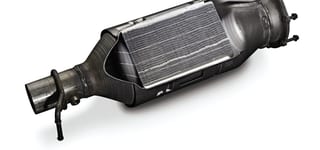Diagnosis of the diesel particulate filter (DPF)

Introduction of particulate filter
In 2009, cars had to meet the so-called Euro-5 standard. Compared to the Euro-4 standard, this meant that cars had to emit 80% less soot particles. The only way to achieve this was to use a particulate filter.
A particulate filter is a filter that can be fitted to a diesel engine to prevent the emission of harmful particles. In full, a particulate filter is called a Diesel Particulate Filter (DPF). Gasoline cars cars built in 2018 must also have a Gasoline Particle Filter (GPF), or also called an Otto Particle Filter (OPF).
Emissions of soot particles pollute the air are harmful to health. The particles contribute to the concentration of particulate matter particles in the air.
How do soot particles form?
Soot particles are caused by incomplete combustion of diesel. This can be due to poor quality diesel, improper injection pressure, or a technical defect. Soot emissions can decrease with the use of a proper particulate filter.
How a particulate filter works
A particulate filter, made of ceramic material, for example, is placed in the exhaust system as close to the engine as possible. The harmful particles of emissions collect in the filter. To ensure that the filter does not clog up, the captured soot particles are periodically burned. This happens, depending on the car, between 200 and 1000km. This is also called a regeneration. In this automatic regeneration, controlled by the engine management, the exhaust gas temperature is artificially raised to at least 600 degrees Celsius to burn the particulate filter clean, often controlled by 2 temperature sensors. With automatic regeneration, more fuel is consumed, by artificially raising the exhaust gas temperature. An average regeneration process takes about 10 minutes.
Particulate filter clogged, how is this possible and how do I notice it?
A car will automatically regenerate if conditions meet certain conditions. If the car does not meet the conditions, then the car will not regenerate automatically. As a result, the particulate filter becomes clogged with soot particles. Once the particulate filter is so severely clogged, the car will not be able to regenerate automatically even though the conditions are met. The particulate filter light on the dashboard will come on.
Most common causes that cause an illuminated particulate filter light on the dashboard:
- Short rides, preventing dressing from getting going
- Bad injectors, no proper injection of diesel, poor ignition
- An internally damaged particulate filter
A clogged particulate filter will (can) cause the following complaints:
- Fault lights on the dashboard
- Smelly car while driving
- A rising oil level
- The car stutters or jerks
- Lack of power
- Heavy, humming sound
- There is excessive soot/smoke
Want to know how to regenerate the particulate filter yourself or how exactly this works? Then check out our article "Regenerating the particulate filter: Everything you need to know".
Continue driving with a clogged particulate filter?
It is absolutely not recommended to continue driving with a full particulate filter. The car will no longer be able to function properly and the sensors in the car will register this and then start to indicate error codes, or worse; go into emergency mode.
Particulate filter diagnosis
As soon as there is any suspicion that the filter is clogged, we recommend doing a diagnostic. This can prevent high costs later!
With a diagnosis, you can determine what exactly is going on it with particulate filter. Is the fill rate (load) too high, or is there a temperature, or pressure sensor broken?
Proper diagnosis can prevent high costs. If diagnosis shows that a sensor is broken, it can often be replaced. If the fill level of the filter is too high, a forced regeneration can be started using an appropriate diagnostic device. However, the car must meet a number of conditions during forced regeneration, such as:
- Sufficiently filled fuel tank, often with at least 50% diesel content
- Engine at operating temperature
There should be no error codes in the particulate filter system, otherwise regeneration will not start.
However, if the particulate filter exceeds a certain degree of filling, regeneration will simply no longer be possible (neither driving nor using the device). There are then still two solutions:
- Purchase a completely new particulate filter, install it and have it taught to you via the diagnostic computer.
- Overhaul the filter at an authorized company. Depending on the condition of the filter, it will be cleaned or the interior will be completely replaced, which in all cases is more economical than a new DPF filter.
Note: Some garages, in case of particulate filter problems, offer particulate filter removal (or emptying the filter) as a cheap and final solution. However, with this, the car no longer meets the legal requirements and may cause other engine problems. As of 2018, for cars, where the particulate filter has been removed or disabled, these cars will no longer be approved for MOT. The removal of a particulate filter therefore leads to additional costs, adversely affects the sale or trade-in value of your car and is also much more damaging to the environment.
